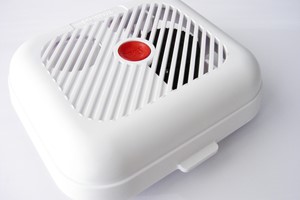In today's construction landscape, ensuring the safety of project teams is of utmost importance. To address the myriad risks associated with construction work, companies must embrace emerging technologies like artificial intelligence (AI), robotics, and advanced job-site camera systems. These innovations can significantly enhance safety outcomes and improve overall project effectiveness.
Construction companies should focus on five critical areas where a staggering 93% of serious incidents occur: human-machine interface, falls, energized systems, line of fire, and lifting operations. By concentrating safety efforts in these areas, companies can reinforce safety standards, promote careful planning, and cultivate a culture of responsibility among team members. Advanced technology can aid in monitoring these conditions, alerting teams to potential hazards, and enabling rapid responses to ensure everyone’s well-being.
AI’s predictive capabilities allow companies to proactively identify hazards, enabling timely interventions that can prevent accidents. Site safety cameras act as vigilant monitors, providing real-time data that helps oversee operations and react swiftly to any signs of danger. Robotics introduces another layer of safety by automating equipment checks and performing tasks in hazardous conditions, thus reducing risks associated with manual labor.
Aerial drones have become invaluable tools for construction teams, offering real-time monitoring of project progress and quality control. By using drones for tasks like roof inspections, teams can remotely identify potential safety hazards, significantly lowering the risk of fall accidents. For waterfront construction projects, underwater drones provide critical visibility into conditions that can be unpredictable and hazardous. By employing these drones, companies can perform inspections without requiring divers, thus mitigating safety risks and proactively addressing potential issues. Drones equipped with sensors can detect heat signatures, allowing teams to identify early signs of fires or overheating equipment, revolutionizing safety protocols.
Construction companies should consider piloting terrestrial robots tailored for specific tasks. Recent tests show that these robots can automate layout and installation processes, leading to improved safety, enhanced productivity, and accelerated project timelines. For example, technology that uses Building Information Modeling (BIM) data can autonomously print layout lines, allowing for precise and efficient execution of tasks that were once physically demanding and hazardous. Innovations like semi-automated drilling technology enhance safety by reducing the need for workers to engage in overhead drilling, allowing robots to mark and drill holes based on digital blueprints.
Advanced site cameras are essential for boosting operational efficiency and safety. Equipped with remote monitoring capabilities and high-resolution imaging, these cameras provide real-time visibility into project progress. Integrating AI and computer vision enables these cameras to automatically identify safety hazards and enhance site security, fostering a culture of safety excellence. They also play a vital role in documenting safety procedures and investigating incidents, allowing teams to analyze accidents, identify root causes, and implement corrective measures. Moreover, remote access to camera feeds enables stakeholders to monitor safety protocols in real time.
Site safety cameras can be likened to a coach's game film, offering the ability to review and optimize performance based on captured footage. By strategically positioning cameras in high-activity areas, teams can identify risk profiles and enhance their safety protocols. Leveraging machine learning, these systems can analyze data to identify unsafe behaviors and conditions, generating comprehensive reports that alert supervisors to potential risks. This feedback loop not only identifies unsafe practices but also reinforces positive behaviors among workers.
The integration of AI and robotics extends beyond the construction phase, offering long-term benefits for safety and operational efficiency. By creating 'digital twins' of buildings—virtual models that replicate their physical counterparts—companies can proactively plan maintenance and monitor performance. AI algorithms can analyze data from sensors embedded within building systems, identifying anomalies that may indicate safety concerns.
The integration of AI, robotics, and advanced site camera systems holds immense potential to improve safety outcomes in construction. By leveraging these technologies, companies can enhance data analysis, inform safer work practices, and implement effective risk management strategies. However, introducing these innovations requires continuous investment in training programs to ensure workers are equipped to utilize these technologies effectively. This ongoing process of evaluation and adjustment is crucial for maximizing the benefits of emerging technologies.
By aligning technological advancements with safety initiatives, the construction industry can reinforce its commitment to creating safer jobsites, fostering a culture of accountability, and delivering projects that meet the highest standards of safety and quality.













